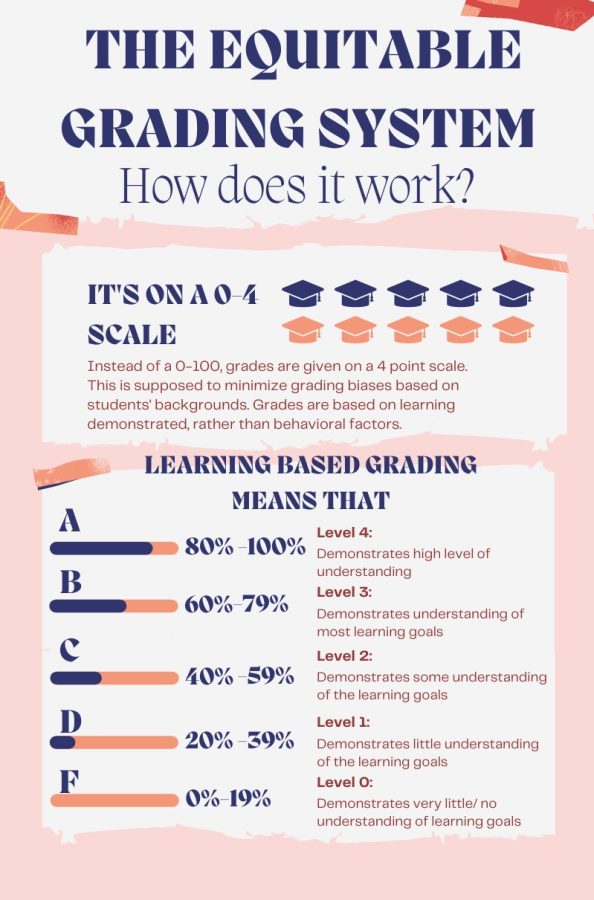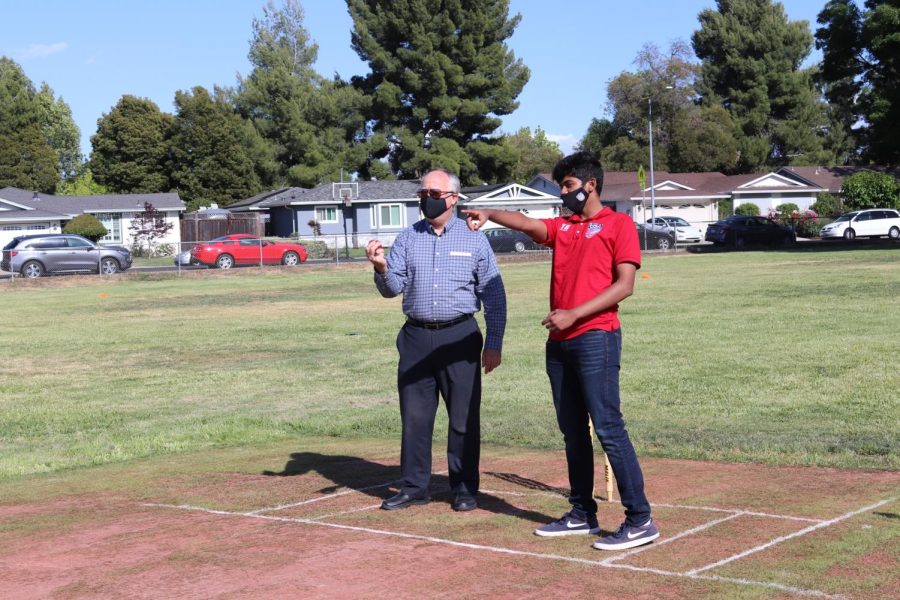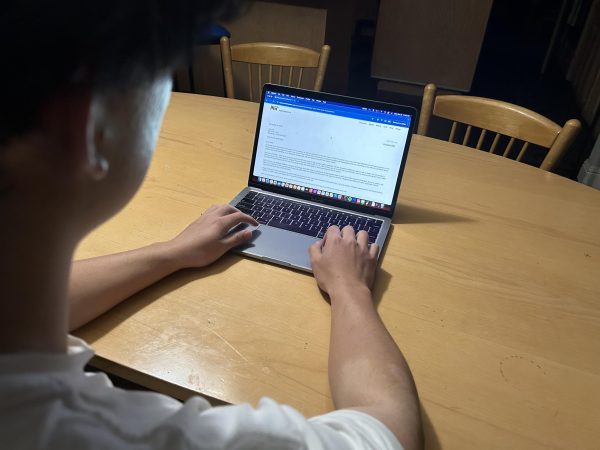The Grading for Equity concept explained
Equity grading is a new concept based on a 4-point scale.
February 11, 2022
The A-F grading system that students have grown up with has been the standard in the United States since the 1940s, with letter grades being based on percentages out of 100. However, with more suspicion circulating about the impartiality (or not) of the 100 point scale, many teachers have found themselves questioning our traditional system turning to “Equitable Grading.”
“Why is an A only 10% of the pie, a B only 10% of the pie, and yet an F is 59% of it in our traditional grading system? It doesn’t make sense once you start to think about it but we have just been in this system for so long that we have just accepted what it is and never really thought about changing it,” said Shannon Heller, an ASL and AVID teacher.
When the book “Equitable Grading” became more popular the Pleasanton district office discussed it with and taught it to some of the teachers at Amador.
“I found out about the new system because of the district office. Nimartha Grewal started a private discussion about the book that a lot of us read called grading for equity. Then they had a professional development to further our knowledge about it. The school requested one person from every department be represented in that cohort, so since I was familiar with it I volunteered to be the person,” said Benjamin Benson, an Economics and US History teacher.
The language department in Amador Valley is one of the main departments interested in equitable grading. The American Sign Language teachers communicated with the French teacher at Foothill, who already uses standards based grading and decided to change up their grading system for semester two.
“We feel that standards based grading will better represent the learning that is happening in class and it will accurately represent the students’ understanding of material,” said Kyra Britto, an ASL teacher.
Even though they only have a small sample size, since it has only been one month, they have seen improvements.
“It’s only been a few weeks but I have noticed that as soon as I point the grades into Q students are getting work to me late and they’re not as freaked out about it because their grade is not affected. I’m still processing it but in the short amount of time that we’ve done it so far i’m liking it. I see that the students are engaging and getting their work in,” said Shannon Heller, and ASL and AVID teacher.
Even though a change in the grading system brought some advantages of course there were some disadvantages that followed along with it. The main being students and the community not understanding or knowing about equitable grading.
“The biggest disadvantages are that it’s confusing and unfamiliar for people that have been going through 12 years of schooling to all of a sudden have something very different. For them trying to maneuver that because of their grade and college and all that stuff is on the line can be stress inducing,” said Benson.
This might not be the perfect system but questioning the traditional grading system we are used to interests a lot of teachers and students. There may not be an answer that fits every classroom or every department.
“I’m not sure how I feel about the new grading policy. I think all teachers can make tweaks to the policy to make it fit better for their department. Students may benefit from a lack of tedious busy work to fill their grade, but are at a disadvantage wasting time doing assignments if they do not affect their GPA” said Hannah Baxter (‘22).















